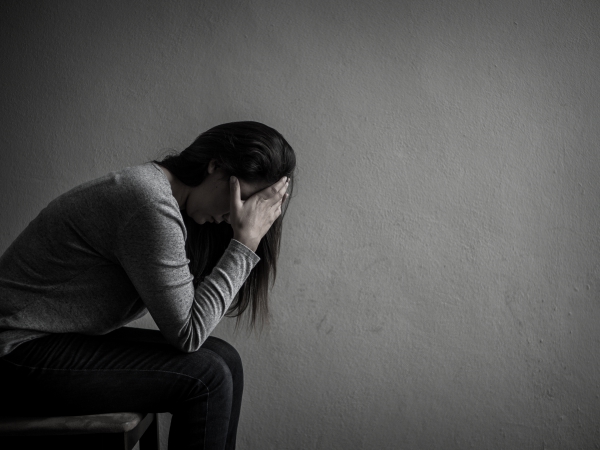What is SIDS?
Sudden infant death syndrome (SIDS) are deaths that occur among infants aged younger than 12 months, occurring suddenly, unexpectedly and without any obvious cause. Whenever this happens, a complete investigation is warranted. In the United States, around 4,500 infants die of unknown immediate identifiable cause per year. The diagnosis of SIDS is made when despite a complete investigation, review of the clinical and social history of the baby, the death cannot be explained. It is the most common cause of death among infants aged between 1-12 months in the United States. It most commonly arises in infants aged between 2 and 4 months. It has also been observed to be predominant among non-Hispanic black and American Indian infants.
The diagnosis of SIDS is a diagnosis of exclusion, meaning that all other causes such as poisoning, hypo- or hyperthermia, child abuse, neglect, homicide or suffocation should be ruled out first. There are several factors that can contribute to SIDS, including sleeping on the stomach, sharing the bed with another adult or child and mothers who smoke. Most SIDS deaths arise in males.
What are the causes of SIDS?
By definition, the exact cause of SIDS is not known. However, studies have shown that there are some factors that may be contributing to SIDA. These include:
· Brain defects: If a baby is born with certain defects in the brain, they are more likely to die of SIDS. This is because they are not able to properly control their breathing and arousal from sleep.

· Low birth weight: Similarly, being born prematurely or being born with a low birth weight makes it more likely that the baby’s brain has not matured properly to ensure adequate breathing control.
· Sleeping position: It has been observed that sleeping in the prone position (lying flat on the stomach) most commonly results in SIDS. This may be because the babies tend to have breathing difficulties in that particular position.
· Sleeping on a soft surface: If your baby is placed lying face down on a soft mattress or fluffy material, this can result in obstruction in the infant’s airway.
· Bed sharing: Statistics show that if a baby shares the same bed with another adult or child, death from SIDS is more likely to occur.
What are the risk factors of SIDS?
The following factors can increase the risk of SIDS:
· Being a boy
· Being aged between 2 and 4 months
· Being a non-Hispanic black and American Indian infant

· Having siblings or cousins who died from SIDS
· Having parents who are smokers
· Being born prematurely
What are the signs and symptoms of SIDS?
The typical presentation of SIDS starts with an infant who has been put to bed, most commonly after having been fed. The parents usually check on the baby regularly, which is usually uneventful. However, at some point the baby is found dead in the same position he/she has been placed at the beginning of naptime or bedtime.
In most cases, the baby was apparently healthy before the event. However, some parents have reported that their babies “were not feeling themselves” hours preceding death. These may include:
· Breathing difficulties
· Abnormal movement of the extremities
· Changes in the skin colour (baby turning blue)
· Diarrhoea
· Vomiting
· Lethargy


How is the diagnosis of SIDS made?
To make the diagnosis of SIDS, your doctor or any other investigating agent will ask you a series of questions concerning your baby:
· Did the infant ingest any foreign body or other substances?
· Does the infant have a history of Apnea (abnormal pauses in breathing)?
· How was the infant prior to the event?
· What is the timing of the last meal before bed/naptime?
· What was the position of the baby?
· What was done by the parents when the baby was found inert in the crib/bed?
It is also important for the professionals to investigate for any other possible cause of death such as trauma, abuse, neglect, poisoning, environmental factors or health problems. Normally, autopsy has to be performed and the coroner’s protocol should be respected.
How is SIDS managed or prevented?
SIDS, as the name suggests, is irreversible and there are no treatment for this condition. However, there are several ways in which it can be prevented. These include:

· Put your baby to sleep on his/her back instead of on the stomach or on the side.
· Avoid filling the crib with fluffy paddings, thick quilts. Avoid the use of pillows, toys, stuffed animals or any other objects. Use a firm mattress to avoid any airway obstructions
· Avoid overheating your baby. Avoid any additional covers or covering the baby’s head
· Put your baby to sleep in your room so that you can keep an eye on your baby. However, it is not recommended that your baby sleeps in the same bed as you. Place the baby’s crib in your room for at least 6 months or a year.
· Breastfeed your child for at least 6 months
· Try the use of pacifiers as from the age of 3-4 weeks
· Immunize your baby according to the recommended immunization schedule in your country
What is the prognosis of SIDS?
The sudden and unexpected death of a child can be a very traumatizing event for parents. It is of upmost important to get emotional support either from the family or with mental health professionals. Some parents may even feel guilty for what happened. It may also be traumatizing to have to go through police investigation despite having the heartbreak and shock of having suddenly lost your child. However, bear in mind that no one is here to blame you and that it is solely the protocol that needs to be followed. There are support groups for SIDS which your doctor may refer you to. Communicate what you feel with others. Be open with your partner too as such an event can put a lot of stress on your relationship. Finally, it is okay to feel sad. Take your time to grieve the death of your baby. It is normal to cry. The healing will take time.


Source:
Burnett, Lynn., 2018. Sudden Infant Death Syndrome
Sudden Unexpected Infant Death and Sudden Infant Death Syndrome. Centers for Disease Control and Prevention.
Hymel KP. Distinguishing sudden infant death syndrome from child abuse fatalities. Pediatrics. 2006 Jul. 118(1):421-7.
Krous HF. Sudden Unexpected death in infancy and the dilemma of defining the sudden infant death syndrome. Current Pediatric Reviews. 2010. 6;(1):5-12.
Leiter JC, Böhm I. Mechanisms of pathogenesis in the Sudden Infant Death Syndrome. Respir Physiol Neurobiol. 2007 Nov 15. 159(2):127-38.


